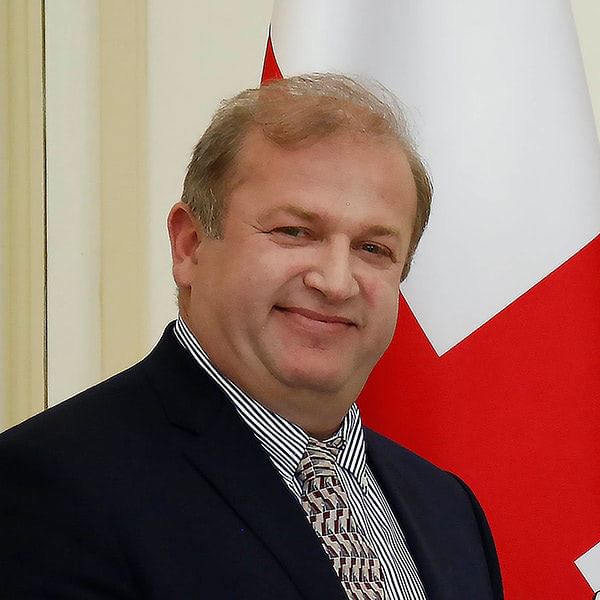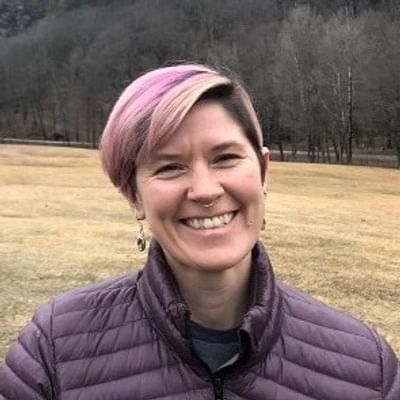- Undergraduate
Bachelor's Degrees
Bachelor of ArtsBachelor of EngineeringDual-Degree ProgramUndergraduate AdmissionsUndergraduate Experience
- Graduate
Graduate Experience
- Research
- Entrepreneurship
- Community
- About
-
Search

Fridon Shubitidze
Professor of Engineering
Overview of EMS research programs developed over two decades to solve real-world geophysical and medical problems.
Overview
Professor Fridon Shubitidze joined Dartmouth Engineering's faculty in 2007. He is a senior member of the Institute of Electrical and Electronics Engineers (IEEE) and earned his MS in radiophysics and his PhD in physical and mathematical sciences from Tbilisi State University in Georgia. He is a senior engineer/physicist at White River Technology, Inc.
Shubitidze received the DoD's Strategic Environmental Research and Development Program (SERDP) 2011 Munitions Response Project-of-the-Year award for the development of advanced EMI inversion models and UXO classification strategies. A native of the Republic of Georgia, he was awarded the Medal of Honor by the country's President in 2019 for "his personal contribution in the development of science and in the creation of modern technologies."
Research Interests
Numerical methods in computational electromagnetics; electromagnetic sensing methodologies; detection and discrimination of sub-surface objects; linear and non-linear inverse-scattering; induced geo-electromagnetic fields; micro strip antennas; photonic band gaps; near field optics; DNA sequencing; electrostatic discharge; magnetic nano-particles hyperthermia for cancer treatment and imaging
Education
- MS, Radio Physics, Tbilisi State University (Sukhumi branch) 1994
- PhD, Physical and Mathematical Sciences, Tbilisi State University 1997
Awards
- A Fulbright Specialist (2022–2025)
- The Medal of Honour, Awarded by the President of Georgia (Tbilisi, 2019)
- SERDP Project of the Year (Washington DC, 2011)
- NATO Advanced Study Institute, Young Scientists Award (Italy, 2006)
- State Foundation Scholarship (Greece, 1998–1999)
- Presidential scholarship for young scientists (Georgia, 1997–2000)
Professional Activities
- Associate Professor, Department of Physics and Mathematics at Sukhumi Branch of Tbilisi State University, 1998–2000
- Senior Teacher, Department of Physics and Mathematics at Sukhumi Branch of Tbilisi State University, 1994–1997
- Senior Researcher, Laboratory of Applied Electrodynamics at Tbilisi State University, 1993–1998
Research Projects
-
Label free genome sequencing
Label free genome sequencing
Label free genome sequencing is an advancing technology to "read" the sequence in a single DNA molecule in a massively-parallel fashion. The technology combines concepts of single nucleotide addition (SNA) sequencing, near field optics, single molecule force spectroscopy, and microfluidics. This work is performed in collaboration with Professor Dmitri Vezonov at Lehigh University.
-
Unexploded ordnance (UXO) detection and discrimination
Unexploded ordnance (UXO) detection and discrimination
Unexploded ordnance (UXO) detection and discrimination approaches are being developed to solve the Department of Defense's (DoD) most pressing environmental problems: UXO cleanup and humanitarian de-mining. The program combines advanced forward and inverse EM sensing approaches with statistical signal processing methodologies to solve these complex and challenging problems. See also UXO Research Group.
-
Computational electromagnetics
Computational electromagnetics
Computational electromagnetics research is developing advanced analytical and numerical methods—such as the method of auxiliary sources, the method of moments, and pseudo spectral FDTD methods—for investigating high voltage non-linear electrostatic discharge phenomena as well as electromagnetic energy propagation in complex (Chiral and Bi-anizotropic) media.
-
Magnetic nanoparticles
Magnetic nanoparticles
This project provides quantitative data analysis, physical modeling, and numerical methods support to the Dartmouth Center of Cancer Nanotechnology Excellence. The project employs physical modeling and numerical methods to understand the electromagnetic interactions that occur when magnetic nanoparticles are placed in an alternating magnetic field in biological environments, and investigates the impact that biological parameters (e.g., blood flow) have on the ability to increase tumor temperatures locally.
Selected Publications
- Stigliano R, Danelyan I, Gabriadze G, Shoshiashvili L, Baker I, Hoopes PJ, Shubitidze F. (2024) "Alternating magnetic field guiding system for MNP hyperthermia treatment of deep-seated cancers." International Journal of Hyperthermia. 41(1): 2391008.
- Orman-Kollmar M, Reynolds R, Barrowes B, Maxson M, Hartshorn C, Shubitidze F. (2024) "Single-pass handheld and unmanned ultra-light electromagnetic arrays for UXO detection and classification." UXO GeoPhysics, EEGS FastTIMES. 28(1).
- Miller JS, Gunnels M, Shubitidze F. (2024) "Electromagnetic induction data driven synthetic seeding: An effective approach to augment quality control on advanced geophysical classification projects." UXO GeoPhysics, EEGS FastTIMES. 28(1).
- Ghambashidze K, Chikhladze R, Saladze T, Hoopes PJ, Shubitidze F. (2023) "E. coli phagelysate: A primer to enhance nanoparticles and drug deliveries in tumor." Cancers. 15: 2315.
- Shoshiashvili L, Shamatava I, Kakulia D, Shubitidze F. (2023) "Design and assessment of a novel biconical human-sized alternating magnetic field coil for MNP hyperthermia treatment of deep-seated cancer." Cancers. 15: 1672.
- Ghambashidze K, Chikhladze R, Saladze T, Shubitidze F. (2023) "Improvement of targeted therapy by E. coli phage-lysate vaccination: Tumor microenvironment modulation and magnetic nanoparticle delivery enhancement in tumor tissue." Georgian Biomedical News. 1(1).
- Glaser DR, Barrowes BE, Shubitidze F, Slater LD. (2023) "Laboratory investigation of high-frequency electromagnetic induction measurements for macro-scale relaxation signatures." Geophysical Journal International. 235(2): 1274–1291.
- Hartshorn CA, Isaacson SD, Barrowes BE, Perren LJ, Lozano D, Shubitidze F. (2022) "Analysis of the feasibility of UAS-based EMI sensing for underground utilities detection and mapping." Remote Sensing. 14: 3973.
- Shubitidze F, Barrowes BE, Shubitidze T, Perren LJ. (2022) "Linear current sensing for detecting and locating underground structures." IEEE Transactions on Geoscience and Remote Sensing. 60: 2005115.
- Zhao S, Hao N, Zhang JXJ, Hoopes PJ, Shubitidze F, Zi C. (2021) "Fabrication of monodisperse magnetic nanorods for improving hyperthermia efficacy." Journal of Nanobiotechnology. 19: 63.
- Barrowes B, Prishvin M, Jutras G, Shubitidze F. (2019) "High-frequency electromagnetic induction (HFEMI) sensor results from IED constituent parts." Remote Sensing. 11(20): 2355.
- Miller J, Schultz G, Keranen J, Shubitidze F. (2018) "Dynamic EMI sensing technologies: Developments and demonstrations at live UXO sites on land and underwater." FastTIMES. 23(5).
Videos
Electromagnetic Sensing at Thayer
News
In the News
Materials Research Society
Flower-shaped magnetic nanoparticles may help destroy deep-seated cancer cells
Mar 15, 2015
Flower-shaped magnetic nanoparticles may help destroy deep-seated cancer cells
Mar 15, 2015






